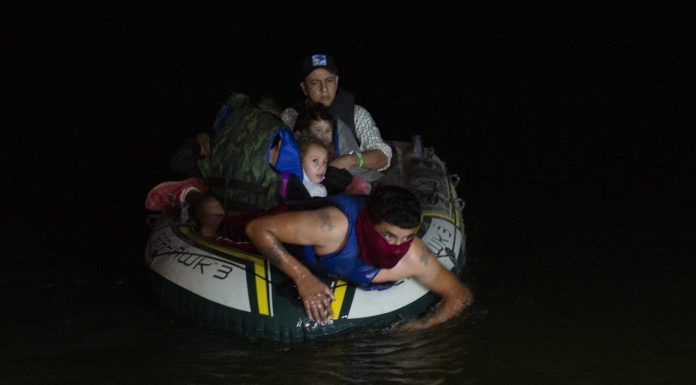US Customs and Border Protection in the past year has encountered more than 30 times as many illegal aliens at the US–Mexico border who do not hail from Central or Southern America.
CBP encountered 1,308 non-Mexican and non-Central American illegal aliens in May 2020, when former president Donald Trump kept the Southern border relatively secure.
After President Joe Biden assumed control, CBP’s May 2021 total encounters with extra-continental illegal aliens jumped to more than 40,000.
These cases now account for more than 20% of arrests at the US–Mexico border. That’s 137,000 total extra-continental encounters at the border so far this fiscal year.
The Center for Immigration Studies sent Todd Bensman, the Center’s senior national security fellow, to investigate the human-smuggling pipeline that moves non-Mexicans and non-Central Americans from South America through Panama, Costa Rica, Nicaragua and Mexico and into the United States’ interior.
“‘Extra-continentals’—including people from Bangladesh, Uzbekistan, Russia, Burkina Faso, Mauritania, Syria, Iraq, Pakistan, Somalia and dozens of other countries—represent a growing percentage of those coming to the U.S. border,” Bensman said in summary of his three-part commentary, “A United Nations of Mass Illegal Immigration.”
Bensman accompanied three young Haitian men and their smuggler, “Felix,” as they met two Nicaraguan soldiers, armed with AK-47s, who had been bribed to escort them across the border.
“This is the entrance where we have the illegal crossings,” Felix said. “Here in Nicaragua, the boys from the Army should be somewhere around here in hiding or in specific places such as this one waiting for the foreigners to cross so that they can get some coinear [money].”
Bensman estimates that the Haitian men paid the corrupt Nicaraguan soldiers about $150 each for safe passage across Costa Rica’s border with Nicaragua and for a five-mile trip inland to the San Juan River, where new smugglers would ship them north to Honduras.
“Significant numbers of Haitians are also en route to the U.S. although their trip does not originate from Haiti, but rather Brazil and Chile, where large numbers have resided for many years in relative safety,” he said.
In Los Chiles, Costa Rica, Bensman met another human smuggler, named Luis, who complained that his profession has flourished again “since this president, and since Trump was not in office.”
“Since Trump left, we started seeing this large horde of people,” Luis said. “They tell me they’re giving out papers to everyone … Venezuelans, Cubans—everyone! They say they’re going to the U.S. to work. The border was too tight before.”
Luis said the illegal immigration surge has almost “collapsed the whole town,” with would-be illegal aliens flooding hotels and churches until there was “not one single room here available.”
The pipeline through Costa Rica has also attracted African and Middle Eastern men who want to be smuggled into the United States.
Bensman said he worries that the illegal aliens who come from Africa and the Middle East pose a greater national security threat than those from Central and South America.
“The significance of this extra-continental flow is that it ferries inherent national security risks from Muslim-majority nations where violent Islamic extremism is rampant,” he said.
“The migrants also are coming now from sub-Saharan African nations rife with war criminals and brutal tribal militias that commit atrocious human rights violations,” he added. “At issue with this species of migration is that any criminal histories, violent backgrounds, and purported persecution stories are rarely discoverable by U.S. homeland security agencies.”

